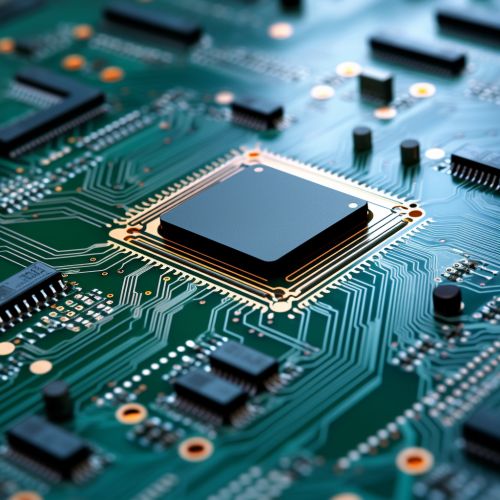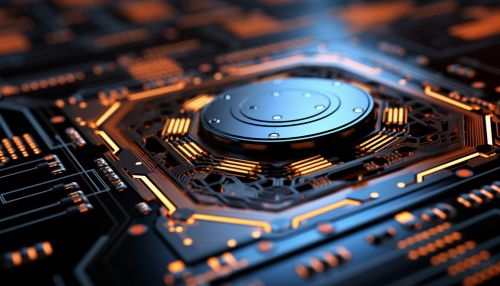Integrated Circuit
Overview
An integrated circuit (IC), also known as a microchip, is a set of electronic circuits on a small flat piece (or "chip") of semiconductor material, usually silicon. The integration of large numbers of tiny transistors into a small chip results in circuits that are orders of magnitude smaller, faster, and less expensive than those constructed of discrete electronic components. The IC's mass production capability, reliability, and building-block approach to integrated circuit design has ensured the rapid adoption of standardized ICs in place of designs using discrete transistors.


History
The idea of integrating electronic circuits into a single device was born when the German physicist and engineer Werner Jacobi developed and patented the first known integrated transistor amplifier in 1949 and the British radio engineer Geoffrey Dummer proposed to integrate a variety of standard electronic components in a monolithic semiconductor crystal in 1952. A year later, Harwick Johnson filed a patent for a prototype IC. However, the first practical ICs were invented by Robert Noyce at Fairchild Semiconductor and Jack Kilby at Texas Instruments independently in 1958–59.
Fabrication
The process of IC fabrication is a multiple-step sequence of photolithographic and chemical processing steps during which electronic circuits are gradually created on a wafer made of pure semiconducting material. Silicon is almost always used, but various compound semiconductors are used for specialized applications. The entire manufacturing process, from start to packaged chips ready for shipment, takes six to eight weeks and is performed in highly specialized facilities referred to as fabs.
Classification
Integrated circuits can be classified into analog, digital and mixed signal (both analog and digital on the same chip). Digital integrated circuits can contain anywhere from one million to one billion logic gates, amplifiers, oscillators, timers, and other components. ICs used for specific purposes, such as microprocessors, DSPs, ASICs, FPGAs, and memory chips, are all examples of digital ICs.
Packaging and Mounting
Once the ICs are fabricated, they need to be connected to the external circuitry. This is achieved by packaging the ICs and mounting them on a printed circuit board (PCB). The package of the IC protects it from physical damage and corrosion. It also dissipates heat produced in the device, provides a means to connect it electrically to the circuit, and adds additional mechanical strength.
Applications
Integrated circuits have many applications, from the microprocessor chip in a home computer or a cell phone to the chips in a car's antilock braking system, the motion sensors in modern drones, and the chips that control functions in various home appliances.
Future Trends
The future of IC technology appears to be in the areas of nanotechnology, flexible electronics, and quantum computing. As the demand for smaller, faster, and more efficient devices continues to grow, these fields are likely to play a significant role in the development of future IC technologies.
